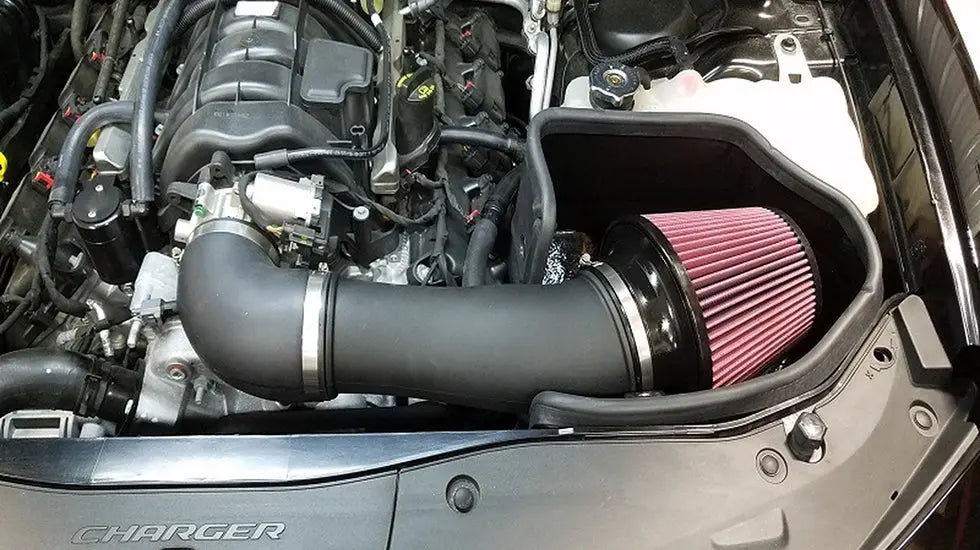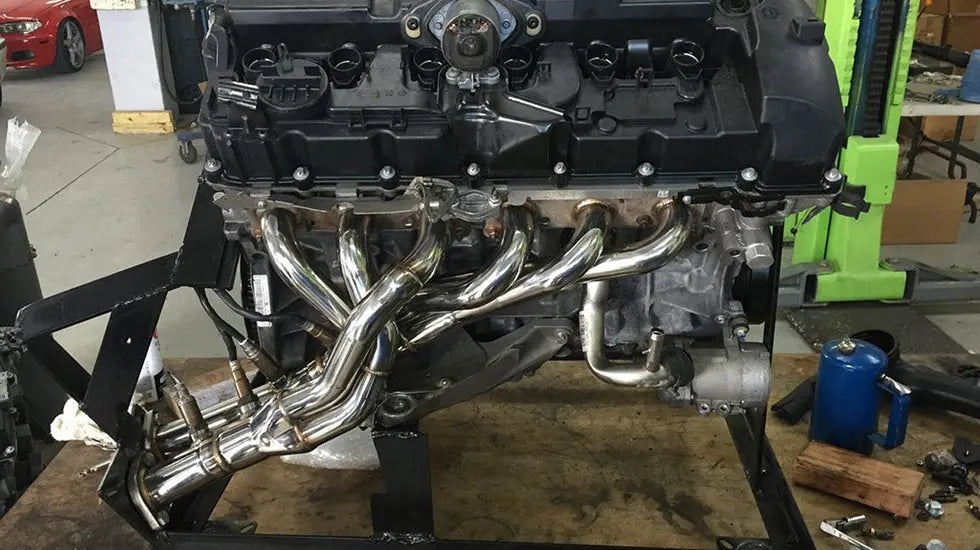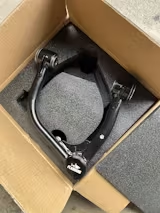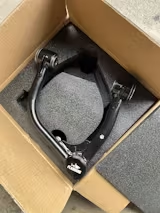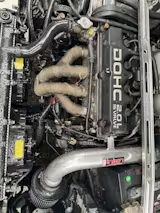A cold air intake (CAI) is an essential component of many modern vehicles, designed to enhance engine performance and fuel efficiency. Essentially, it's a system that brings cooler air from outside the engine bay into the engine. This cool air helps optimize the combustion process, leading to better power output. But what exactly does it do, and is it worth the investment? Let’s break it down.
How Does a Cold Air Intake Work?
A cold air intake system is designed to bring cooler, denser air into the engine. The basic concept is that cooler air contains more oxygen molecules than warmer air, and this increased oxygen density helps the engine burn fuel more efficiently. As a result, the engine can produce more power.

By drawing air from outside the engine compartment, where the air is cooler, the intake system ensures that the engine receives higher-quality air. This is essential because engines perform better when they can burn more oxygen, leading to improved combustion and better overall engine efficiency. For performance car enthusiasts, this makes cold air intake systems a popular modification to enhance power and responsiveness.
The Benefits of Installing a Cold Air Intake
Installing a cold air intake system offers several significant benefits for your vehicle. This modification enhances engine performance, fuel efficiency, and even the sound of your car. It’s a relatively simple upgrade that can make a noticeable difference in how your engine performs.

Improved Engine Performance
One of the main reasons people install cold air intakes is to increase engine power. By drawing cooler, denser air into the engine, the intake system provides more oxygen, which improves combustion efficiency. This allows the engine to produce more power and torque, especially at higher RPMs. As a result, you’ll notice better acceleration and overall responsiveness from your vehicle.
Better Fuel Efficiency
A cold air intake can also help improve fuel efficiency. More efficient combustion means that the engine burns fuel more effectively, which can lead to slight improvements in miles per gallon (MPG). Although the effect on fuel economy may not be dramatic, the enhanced efficiency could be noticeable over time, particularly for those who drive regularly at higher speeds or under heavy load.
Enhanced Sound and Aesthetic Appeal
Another benefit of installing a cold air intake is the improved sound it creates. The intake system amplifies the engine’s intake noise, giving it a deeper, more aggressive tone that many car enthusiasts enjoy. In addition to the auditory benefits, many cold air intake systems come in sleek, visually striking designs that add a performance-oriented aesthetic to your engine bay.
Types of Cold Air Intake Systems
There are several types of cold air intake systems, each with its unique design and benefits. Here's a quick overview:
1. Full-Length Cold Air Intake (Traditional CAI)
This system draws air from outside the engine bay, where it is cooler and denser. It provides the best performance gains by improving engine efficiency, especially at higher RPMs. However, it can be more complex to install and may carry a risk of hydrolock if not properly designed.

2. Short Ram Intake (SRI)
A shorter intake that pulls air from within the engine bay, which is warmer. While it offers quicker installation and better throttle response, the warmer air leads to more modest performance gains compared to a full-length CAI.
3. Ram Air Intake
This system uses the vehicle's forward motion to force air into the intake. It's most effective at higher speeds, providing increased air pressure and airflow to the engine. However, its benefits are less noticeable at lower speeds.

4. Cold Air Intake with Dual Filters
This setup uses two filters, one inside the engine bay and one at the front of the vehicle. It improves both airflow and filtration, offering better engine protection while still increasing performance. However, it can be more complex and costly to install.
5. Hybrid Cold Air Intake
A combination of a short ram and a full-length CAI, offering a balance between performance and ease of installation. It provides moderate power gains while being easier to install than a full-length system.
Considerations Before Upgrading
Before installing a cold air intake (CAI) system, there are several key factors to consider to ensure that it's the right upgrade for your vehicle and will deliver the expected benefits. Here are some important considerations:
-
Vehicle Type and Purpose: Different vehicles may see varying levels of performance improvement from a CAI. For high-performance cars or modified vehicles, a cold air intake can make a noticeable difference in power. However, for daily commuter cars, the improvement might be less significant. Understanding your specific needs will help you decide whether an upgrade is worth it.
-
Compatibility with Engine and Systems: Not all vehicles are suited for a cold air intake installation. Some cars may not have the necessary space or the design may interfere with other systems, like the cooling system, sensors, or exhaust. It's important to verify that the CAI system is compatible with your vehicle's design.
-
Budget: Cold air intake systems vary in price, ranging from a few hundred to a few thousand dollars depending on the brand, material, design, and installation costs. It's important to consider whether you're willing to invest in this upgrade and whether the performance gains will justify the expenditure in the long run.
-
Long-Term Impact: While cold air intakes can improve performance, they can also impact engine longevity or fuel efficiency. Over time, some users report changes in engine load or even higher fuel consumption, especially in cases where the intake system is not properly maintained. It's essential to weigh these factors, especially if you're planning to keep your car for a long time.
-
Warranty Considerations: Some manufacturers' warranties may be voided by modifications such as a cold air intake system. Before upgrading, make sure to check if this modification could affect your vehicle’s warranty or if there are restrictions in place.
Things to Keep in Mind
Once you've installed a cold air intake system, it's important to keep certain things in mind to maintain the performance of your vehicle and avoid potential issues:
-
Preventing Hydrolock: Cold air intake systems generally draw air from outside the engine bay. If the air intake is exposed to water (such as during heavy rain or driving through puddles), it can lead to a condition called hydrolock, where water enters the engine and causes severe damage. Make sure your CAI system is equipped with a water-resistant design to minimize this risk.
-
Regular Cleaning and Maintenance: The filters in cold air intake systems need to be regularly cleaned and replaced to maintain optimal airflow and engine performance. Cotton filters, in particular, require periodic cleaning to prevent dirt buildup. Follow the manufacturer's recommendations on maintenance intervals and use the right cleaning products to extend the life of your system.
-
Increased Noise: One of the side effects of installing a cold air intake system is the increase in intake noise, which can make the engine sound louder and more aggressive. While many enthusiasts enjoy this sound, some drivers may find it too loud or intrusive. It's a good idea to listen to the sound of the system in another vehicle before installing it in your own to make sure you're comfortable with the noise level.
-
Avoiding Overheating: While a cold air intake system typically draws cooler air from outside the engine bay, it's still important to ensure that the intake pipe doesn't draw in hot air from the engine area, which could negate the benefits of the cold air intake. Be mindful of the design and materials of your CAI system to avoid heat absorption, especially if the system is placed too close to high-temperature areas.
-
Professional Installation: Although many cold air intake systems are designed for DIY installation, improper installation can lead to air leaks, poor airflow, or other issues that could impact performance. If you're not experienced with car modifications, it's advisable to have a professional handle the installation to ensure that everything is set up correctly and securely.
By understanding these considerations before upgrading and being aware of important maintenance tips afterward, you can make a more informed decision and ensure that your cold air intake system delivers the best possible performance without causing unintended problems.
Conclusion
A cold air intake system is a relatively simple modification that offers significant performance and efficiency gains for car enthusiasts and performance drivers. With improved airflow, increased horsepower, better fuel efficiency, and an enhanced engine sound, it's a popular upgrade. However, as with any vehicle modification, it's important to weigh the pros and cons, consider potential impacts on your car’s warranty, and ensure compatibility with your vehicle's systems.

